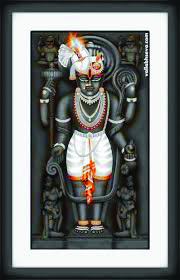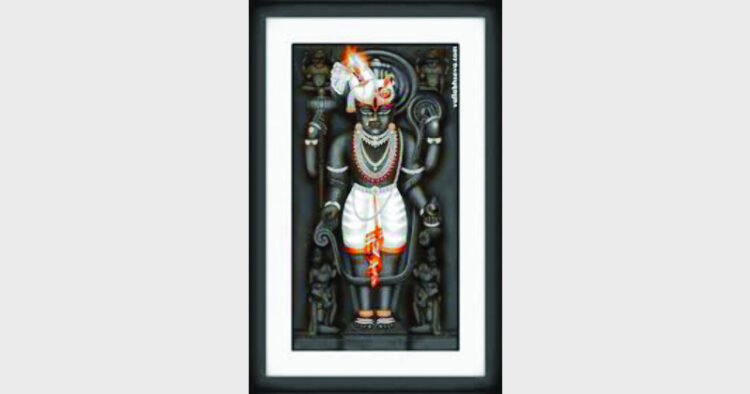 The temples of Rajasthan are a testimony to the great architectural movement which has gripped the State since the 8th century.
The temples of Rajasthan are a testimony to the great architectural movement which has gripped the State since the 8th century.
These holy sites besides being the place of religious worship are the meeting grounds of the people to celebrate the traditions and festivals of Rajasthan.
Kaila Devi Temple is located in Karauli. The temple is dedicated to the Goddess Kaila who is considered by the people as the protector and saviour of mankind. It was built by the Jadaun Rajput rulers who regard the Kaila Devi as their Kul Devi.
Ranakpur Chaumukha Jain Temple This 15th century temple also called Adishwar Temple, was built by Sheth Dhanna. The highlight of Chaumukha is its 29 halls and 1,444 pillars none of which are similar in design.
Eklingji Temple, Udaipur The temple which is in dedicated to Lord Shiva.The temple was built in 734 A.D. by Bappa Rawal. Since that time, Eklingji has been the ruling deity of Mewar rulers. The temple boasts of a striking four-faced idol of Eklingji (Lord Shiva).
Nasiyan Jain Temple also known as the Red Temple, is one of the finest Jain temples in Rajasthan after the temples of Ranakpur and Mount Abu.
The Kiradu Temples are situated in Barmer. There are five temples in all and most remarkable of them is Someshvara Temple. These temples feature impressive sculpture and a Solanki style of architecture.
Pushkar Temples Pushkar alone has more than 400 temples and is said to be the only place with a temple dedicated to Lord Brahma. According to Hindu mythology, all the Gods visit Pushkar for five days in a year to bless the devout and absolve them of their sins.
Rani Bhatiyani Temple, Barmer Rani Bhatiani Temple is constructed from material brought from Khed which originally belonged to a Jain temple dedicated to Mahaveer.
Birla Temple in Jaipur also known as Laxmi Narayan Mandir is dedicated to Lord Vishnu and Goddess Laxmi . The Birla Temple is said to be a replica of a Scottish castle. The temple is situated at the foot of Moti Dungri Fort and is built by the famous business family of Birlas.
Govind Devji Temple in Jaipur, represents the royal past of Jaipur. The temple is dedicated to Govind Devji (Other name of Lord Krishna). The temple is situated in the City Palace complex, between the Chandra Mahal and Badal Mahal.
According to a legend, Govind Devji appeared in the dream of Raja Sawai Jai Singh and asked him to bring his idol from Vrindavan to Jaipur. As a consequence, Raja Sawai Jai Singh brought the idol and placed in the City Palace complex of Jaipur. After the sad demise of Jai Singh, Raja Man Singh took the initiative to build the temple in 1890.
Mandaleshwar Temple Parahera in Rajasthan is a small place famous for the ancient Mandaleshwar temple dedicated to Lord Shiva. This may not be confused with the temple of the same name at Arthuna.
Jain Dilwara Temples are situated in Mount Abu, Rajasthan’s only hill station. These temples were built by Chalukya. Dilwara Jain Temple is one of the finest Jain temple known world over for its extraordinary architecture and marvelous marble stone carvings, some experts also consider it architecturally superior to the Taj Mahal. These temples were built between 11th to 13th century AD, The beautiful lush green hills surrounding the temple gives a very pleasant feeling.
Deo Somnath Temple is famous for its spectacular 12th century temple dedicated to Lord Shiva. This stone temple is an exact replica of the original Somnath Temple in Gujarat.
Dwarkadhish Temple of Kankroli, is dedicated to Lord Krishna. Kankroli is a small town, located at a distance of 65 kms from the city of Udaipur.
Jain Sun Temple which is 300 meters to the side of the main marble temple, Ranakpur. The Sun Temple at Ranakpur dates back to the 13th century. After its destruction, it was rebuilt in the 15th century. The projections on the exterior of the sanctum are sculpted with images of the Sun God seated on a chariot.
Jagatpita Brahma Mandir is at Pushkar. This is the only temple in the world where Lord Brahma – Creator of the Universe, is worshipped. The temple was originally built in the 14th century.
Surya Narayan Temple is the source of Power. Surya Narayan Temple built during mid-15th century is dedicated to the Sun God
Galtaji Temple is situated at Jaipur. The temple, dedicated to the Sun God, is the most famous temple built on the top of a hill. The temple of Galtaji is famous for its natural water springs.
Jagdish Temple is one of the famous temples of Udaipur. In 1651, Jagdish temple was built by Maharana Jagat Singh, who ruled Udaipur during 1628-53. The temple is dedicated to Lord Vishnu.
Ramkunda Temple The temple is in Jaisalmer . The main deity in the temple is Lord Rama, an incarnation of Vishnu.
Menal Temples A place full of natural beauty, Menal is famous for its ancient Shiva temples, picturesque water falls and dense forests.
Rama Vaikunth Temple is one of the most visited temples in Pushkar. The Rama Vaikunth Temple is an intricately carved Hindu temple dating to the 1920 and has images of 361 deities.
Shri Mahavirji Temple Chandanpur is situated 110 km of Sawai Madhopur. The temple combines ancient and modern styles of architecture. The main attraction here is a statue of Shantinath, a Jain Trithankar,
Sri Mehandipur Balaji Temple is situated in Dausa dedicated to Lord Hanuman. It is believed that the deity in this temple has divine power to cure a person possessed with evil spirit.
Sas Bahu Ka Mandir The two temples that are situated side by side with each others are dedicated to the Hindu religion and pay homage to the deity of Lord Vishnu. The temple is actually given the name because of its close proximity to each other as a mother in law is closely related to her daughter in law in a household.
Sheetla Mata Temple, Bhilwara The main icon of the Goddess Sheetla (a form of Durga) is of black stone with patches of sindoor (vermilion) on it. People believe that epidemics spread because of the wrath of Sheetla Mata and hence they worship her and make offerings so that she may be pacified.
Karni Mata Temple at Deshnok is also called the Rajasthan Rats Temple. This temple is dedicated to the Goddess Karni Mata who is believed to reincarnate her devotees into ‘rats’ upon their death.
—Aniket Raja
(Inputs from Rajasthan Tourism)
‘Swaraj is my birth right and I shall have it’—Bal Gangadhar Tilak
Children you must have read in your history textbooks about Lal, Bal and Pal. But do you know out of these three people who Bal was .He was non other than Bal Gangadhar Tilak . Born on July 23,1856 in the coastal town of Ratnagiri in Maharashtra Tilak considered education as the basic condition for freedom and growth. Securing first class in mathematics in graduation Tilak showed keen interest in studying Sanskrit, History and Astrology. After completing law he became a lawer.He launched two journals namely Kesari in Marathi and Maratha in English in the year 1881. Through these two papers he reached the general public and informed them about the ideas of nationalism and the urgent need to free India from the foreign yoke. Tilak promoted Shivaji festival and Ganesh Puja to arouse cultural nationalism among the people. He died on August 1st, 1920, Mumbai. Nation will be observing the 93rd death anniversary of Tilak on August 1st 2013. — AR













Comments